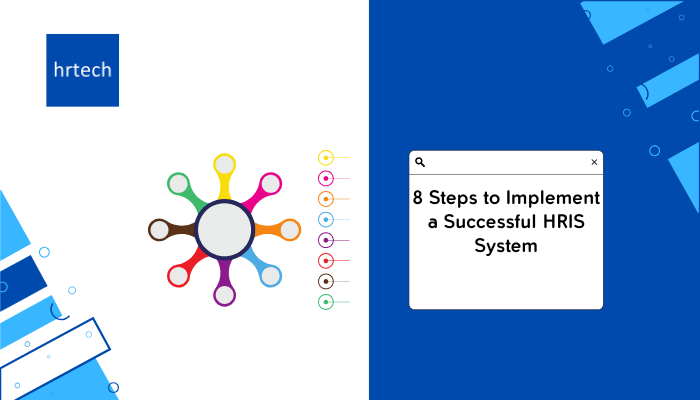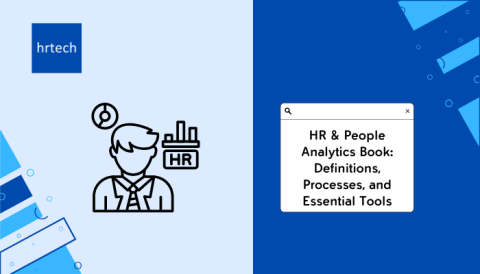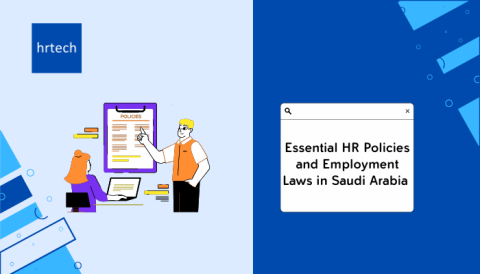A new Human Resource Information System (HRIS) can revolutionize the way your organization handles HR operations, offering the efficiency and automation needed to stay competitive.
Yet, the steps in implementing HRIS are not without their challenges. From identifying your organization’s exact needs to dealing with budget constraints and selecting the ideal platform, the process requires careful planning and execution. Each decision is critical to ensuring the HRIS aligns with your business goals and enhances overall performance.
This guide provides a detailed roadmap of the steps in implementing HRIS, including assessing current HRIS requirements, setting a realistic budget, researching vendors, and developing a comprehensive implementation strategy. By following these insights and practical tips, you’ll be equipped to ensure a smooth transition and achieve long-term success with your HRIS implementation.
What Is HRIS Implementation?
HRIS (Human Resource Information System) implementation is a strategic, long-term process that involves several key steps in implementing HRIS to ensure smooth and successful integration into your organization. Implementing HR technology may seem like a daunting task at first.
While it requires significant time and careful planning, the outcome can greatly enhance your HR department’s efficiency and engagement. By integrating the right tools, your team can streamline daily operations, improve employee experiences, and ultimately drive better results for the organization.
The process typically includes:
- Analyzing current HR processes and identifying areas for improvement
- Creating a customized system that meets your organization’s specific needs
- Testing the new platform to ensure functionality and compatibility
- Integrating the HRIS with existing systems and workflows
Why Is HRIS Implementation Important?
The steps in implementing HRIS can bring numerous benefits to your organization:
| Benefit | Description |
| Automated Processes | Streamlines tasks, reduces errors, cuts costs, and improves efficiency.| |
| Centralised Data | Consolidates HR data for better organization, accessibility, and compliance. |
| Real-Time Insights | Offers up-to-date data for informed decisions and trend analysis. |
| Improved Compliance | Helps meet regulatory requirements with better record-keeping and reporting. |
| Employee Self-Service | Empowers employees to manage their own data (e.g., leave, personal info). |
| Scalability | Easily adapts to growing business needs without adding complexity. |
| Better Workforce Analytics | Enables tracking of performance metrics and employee satisfaction. |
| Enhanced Security | Provides role-based access controls to safeguard sensitive information. |
8 Steps to Implement a Successful HRIS System
Implementing a successful HRIS system involves careful planning and execution. Start by understanding the specific needs of your organization and then follow a step-by-step approach to ensure a smooth integration. When comparing HRMS vs HRIS, it’s crucial to determine which system offers the right features to meet your HR goals effectively.
Here’s a detailed explanation of the steps in implementing HRIS.
1. Identify Your Needs and Requirements
Before starting the HRIS implementation, it’s crucial to evaluate your organization’s current HR processes and understand what your business needs. This analysis will help you define clear objectives for the HRIS. For HRIS for small businesses, this step is even more important, as it ensures the system addresses specific pain points without overwhelming the organization.
By having a clear vision, you ensure that the steps in implementing HRIS align with your goals.
- Analyze current HR workflows and identify gaps
- Determine the specific HR functions that need improvement
- Consider how the HRIS will integrate with existing systems
- Define measurable goals for what the HRIS should achieve
- Engage stakeholders to ensure their needs are reflected
2. Establish a Realistic Budget
Creating a realistic budget is key to successful HRIS implementation. This budget should cover upfront costs, training, maintenance, and any potential hidden expenses. Prioritize the essential features that your organization requires, and leave room for adjustments. A well-planned budget will ensure that the steps in implementing HRIS go smoothly without unexpected financial strain.
- List essential HRIS features needed for your organization
- Account for costs of training and onboarding staff
- Consider ongoing maintenance and support costs
- Plan for potential extra costs or overruns
- Prioritize features that offer the most value for your business
3. Research Vendors and Choose the Right HRIS Platform
Once you’ve outlined your requirements and budget, the next step is researching HRIS vendors. Look for platforms that fit within your budget and can scale with your organization’s growth. For a Global HRIS implementation, it’s essential to focus on the system’s integration capabilities to ensure it works seamlessly with your existing tools across multiple locations. This will help create a unified HR system that can adapt to the specific needs of different regions while maintaining overall consistency.Proper vendor selection is a critical step in the steps in implementing HRIS.
- Compare different HRIS vendors and platforms
- Ensure the HRIS fits within your budget
- Evaluate the scalability of the system for future growth
- Check for integration with existing software and tools
- Review client testimonials and customer support quality
4. Develop a Comprehensive Implementation Plan
A well-structured implementation plan is crucial for keeping the project on track. This plan should include timelines, milestones, and clear responsibilities for both internal and external teams. Securing stakeholder involvement and continuous support is vital for the success of the steps in implementing HRIS.
- Set up internal and external project teams with clear roles
- Create a detailed timeline with milestones for tracking progress
- Define responsibilities for each team and individual
- Secure continuous support and involvement from key stakeholders
- Schedule regular meetings to monitor progress and address issues
5. Kick-Off Implementation and Initial Setup
Begin the implementation with a phased approach to avoid overwhelming your team. Gradual implementation ensures smoother adjustments and allows you to address any issues early.
This approach is especially beneficial when incorporating automated HR processes, as it gives your team time to adapt to the new system while ensuring that automation is effectively integrated without disruption to daily operations. Regular progress updates help keep all teams informed and aligned. This is an essential phase in the steps in implementing HRIS.
- Begin with a phased approach for smoother implementation
- Roll out the system to different departments gradually
- Communicate progress regularly with all relevant teams
- Monitor initial setup for any technical glitches or issues
- Adjust timelines and processes based on real-time feedback
6. Train and Communicate with Users
Training is key to user adoption. Offering comprehensive training programs ensures employees are comfortable with the new system. Continuous support and refresher courses keep staff engaged and proficient. Good communication throughout the transition will solidify this step in the steps in implementing HRIS.
- Develop detailed HRIS training sessions for all system users
- Provide ongoing support and refresher courses when necessary
- Create a dedicated helpdesk or support team for user queries
- Ensure communication channels are open for feedback
- Establish a clear communications plan outlining available resources
7. Rollout and Post-Implementation Support
After the system is live, introduce self-service options for users and provide technical support to resolve any issues quickly. This will encourage HRIS user adoption by empowering employees to engage with the system independently. Additionally, gathering feedback will allow for necessary adjustments, ensuring the system meets user needs and enhancing overall satisfaction.Monitoring performance and making real-time tweaks is crucial for the success of the steps in implementing HRIS.
- Conduct a phased rollout for managers and employees
- Implement employee self-service options to reduce manual tasks
- Provide immediate technical support to address user issues
- Collect user feedback to identify potential improvement
- Proactively monitor the system’s performance and resolve issues
8. Evaluate Success and Plan for Future Enhancements
After implementation, it’s important to evaluate how well the HRIS is working for your organization. Use KPIs to measure success and gather user feedback to plan for continuous improvements. This final evaluation is a key step in ensuring the ongoing success of the steps in implementing HRIS.
- Measure success using relevant KPIs, such as efficiency and user adoption
- Conduct post-implementation reviews with stakeholders
- Identify any issues or gaps in system performance
- Incorporate user feedback into future system updates
- Plan for ongoing improvements to meet future business needs
By following these steps in implementing HRIS, you can ensure a smooth transition and set your organization up for long-term success.
Final Thoughts on HRIS Implementation
A structured approach is essential when following the steps in implementing HRIS. Carefully planning each stage ensures a smoother process and leads to better results. It’s crucial to align the capabilities of the HRIS with your organization’s specific needs to maximize its impact. A well-chosen and properly implemented system can automate key HR tasks, improve data management, and enhance overall efficiency.
As businesses grow, scalable HR systems ensure seamless operations and allow HR teams to focus on strategic goals. Investing in advanced HR techisn’t just a choice—it’s a necessity for staying competitive and meeting the evolving needs of both employees and the organization.
Ready to streamline your HR operations with a customized HRIS solution?
Contact us today to learn how we can help transform your HR processes.





